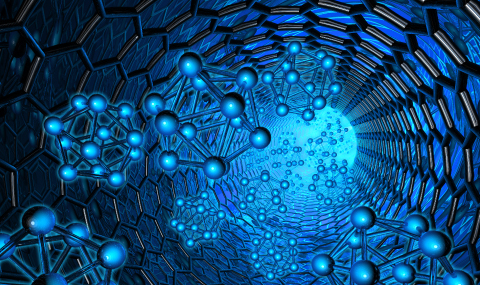Noise Sensing via Zeno and anti-Zeno Effects: Traditionally, sensing seeks to maximize the ratio of useful output that carries information (a signal) on the sensed/probed object to useless output that is essentially void of information (noise) and is caused by the environment of this object. It is particularly important to maximize the signal-to-noise ratio on quantum objects, since measurements are inherently noisy in the quantum domain.
We have broken away from this paradigm by turning noise in the quantum domain into the object of our interest, by unraveling the useful information it carries on physical, chemical and biological processes. Thus, the probing of noise by repeated measurements of a simple quantum probe (a spin) exposed to a noise source can reveal correlations of its fluctuations in time and its statistics, from which we can learn about random dynamical processes in the vicinity of the spin – in a collection of nuclear spins within a solid or a molecule, in a biological fluid or in the brain.
A major breakthrough has been our discovery that unprecedented information on noise correlations and statistics can be obtained from frequent measurements of the spin probe at appropriate intervals. This information is extractable by resorting to well-known effects: if these intervals are extremely short, the evolution of the probe caused by the noise is slowed down or nearly arrested, which is known as the quantum Zeno effect predicted by Misra and Sudarshan in 1977 (see above), but if these intervals are chosen to be longer, the noise-induced evolution speeds up, which is known as the anti-Zeno effect predicted by us in 2000 (see Universal Decoherence Control). What we have recently discovered in collaboration with Turin and Florence is that both the Zeno and the anti-Zeno effects can be detailed signatures of noise correlations in time. In pioneering work done jointly with Stuttgart the Zeno and anti Zeno effects have been used to change the nuclear-spin environment, originally exerting thermal noise, into a much less noisy environment where spins can persist 1000 times longer in a fragile, quantum state that carries quantum information. We are seeking further novel sensing applications of the quantum Zeno and anti-Zeno effects in noisy environments, and are planning to exploit the obtained noise signatures for chemical and biomedical diagnostics.
Ultrasensitive Quantum Noise Sensing: Conceptually, the new general principle behind our schemes is the nonlinear filtering of the quantum noise via frequent measurements of quantum probes. This measurement-based nonlinear filtering transforms thermal or close-to-thermal noise input, which is almost void of information on random processes in the medium, into a strongly non-thermal output that is rich in information regarding the medium fluctuations.
The first scheme is based on optimized interferometric homodyne measurements of a small fraction of a thermal photonic input that renders it coherent or squeezed [1].
Another novel scheme involves interferometers with giant cross-Kerr nonlinearity between thermal photonic beams propagating in cold Rubidium gases: these interferometers are able to render the photonic states strongly non-Gaussian [2].
An alternative experimental implementation of our theoretical proposal [3] involves photons undergoing noise-induced polarization fluctuations, whose temporal correlations are revealed by frequent measurements [4].
Along the same line, we propose and experimentally demonstrate a novel method unravelling the microscopic noise events affecting a continuous quantum variable (e.g., the spatial distribution of a photon) by frequent measurements of a discrete variable (e.g., the photon polarization) coupled to the continuous one [5].
Our selected publications on these issues:
[1] T. Opatrný, A. Misra and G. Kurizki, “Work Generation from Thermal Noise by Quantum Phase-Sensitive Observation”, Phys. Rev. Lett. 127, 040602 (2021).
[2] T. Opatrný, Š. Bräuer, A. G. Kofman, A. Misra, N. Meher, O. Firstenberg, E. Poem, and G. Kurizki, “Nonlinear coherent heat machines”, Sci. Adv. 9, 1070 (2023).
[3] AG Kofman, G. Kurizki and T. Opatrny, Zeno and anti-Zeno effects for photon polarization dephasing, Phys. Rev. A 63, 042108 (2001).
[4] S. Virzì, et al. “Quantum Zeno and Anti-Zeno Probes of Noise Correlations in Photon Polarization”, Phys. Rev. Lett. 129, 030401 (2022).
[5] S. Virzì, et al. , “Sensing microscopic noise events by frequent quantum measurements”, arXiv:2212.12530 (2022).
[6 D. B. R. Dasari, et al. “Anti-Zeno purification of spin baths by quantum probe measurements”, Nat. Commun. 13, 7527 (2022).
Noise sensing/ diagnostics via dynamical control: In collaboration with experimentalists (N. Davidson, WIS; L. Frydman, WIS; D. Suter, U. Dortmund; GA Alvarez, Bariloche) we introduced novel methods based on dynamical control to maximize information on the environment (bath) spectrum and its coupling to the system.
Our selected publications on these issues:
Davidson, N; Almog, I; Sagi, Y; Gordon, G; Bensky, G; Kurizki, G (2012). Measurement of the System-Environment Coupling and Its Relation to Dynamical Decoupling. 2012 Conference on Lasers and Electro-Optics (Cleo)
I.Almog et al., Direct Measurement of the System-Environment Coupling as a Tool for Understanding Decoherence, J. Phys. B 44, 154006 (2011).
Bretschneider, CO; Alvarez, GA; Kurizki, G; Frydman, L (2012). Controlling Spin-Spin Network Dynamics by Repeated Projective Measurements. Physical Review Letters. 108, 140403.
Zwick, A.; Alvarez, G.A.; Kurizki, G. (2016). Maximizing Information on the Environment by Dynamically Controlled Qubit Probes. .Physical Review Applied. 5:-014007.
Zwick, A., Suter D., Kurizki G. Alvarez GA (2020) Precision limits of tissue microstructure characterization by Magnetic Resonance Imaging. Physical Review Applied. 14, 024088 (2020)

